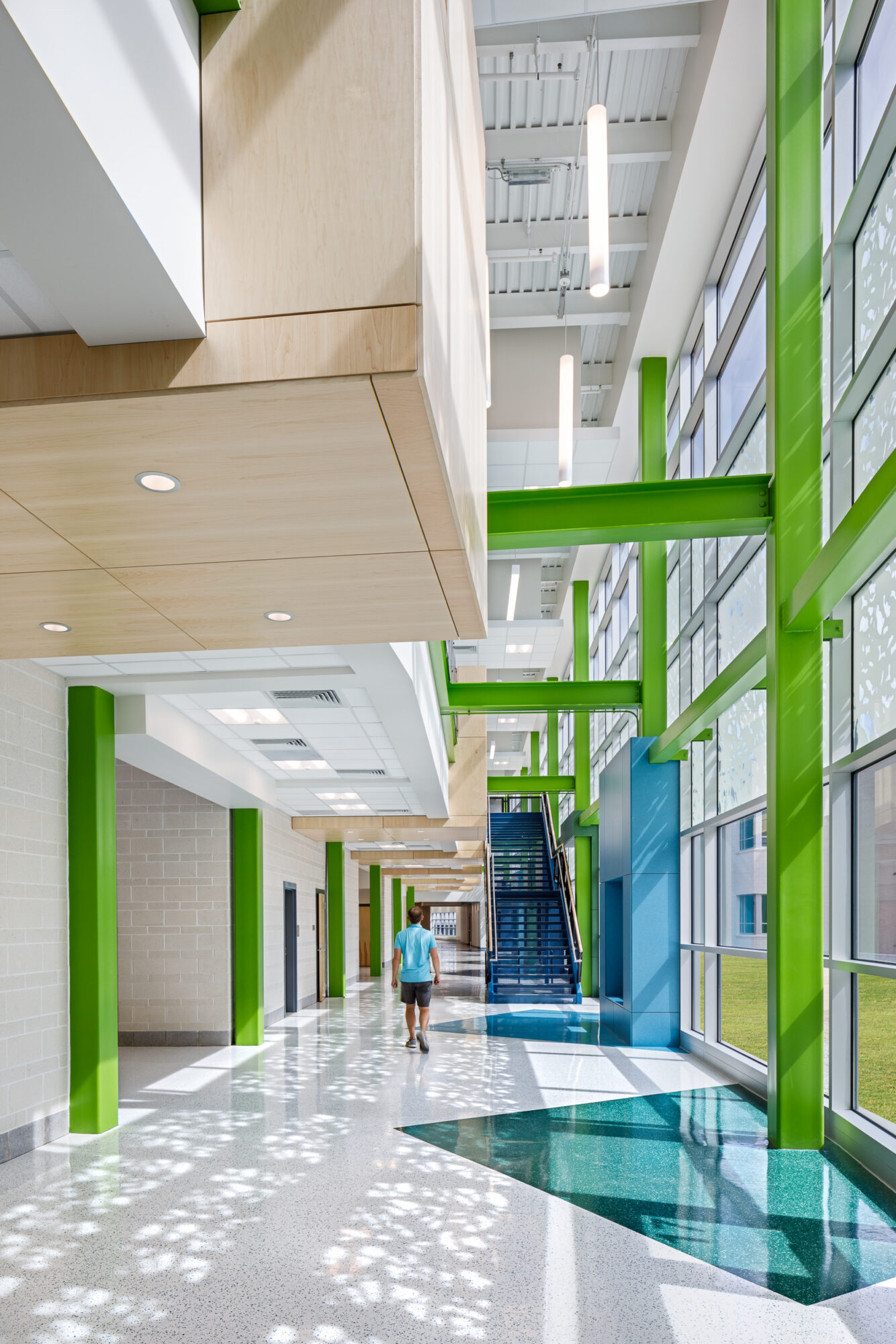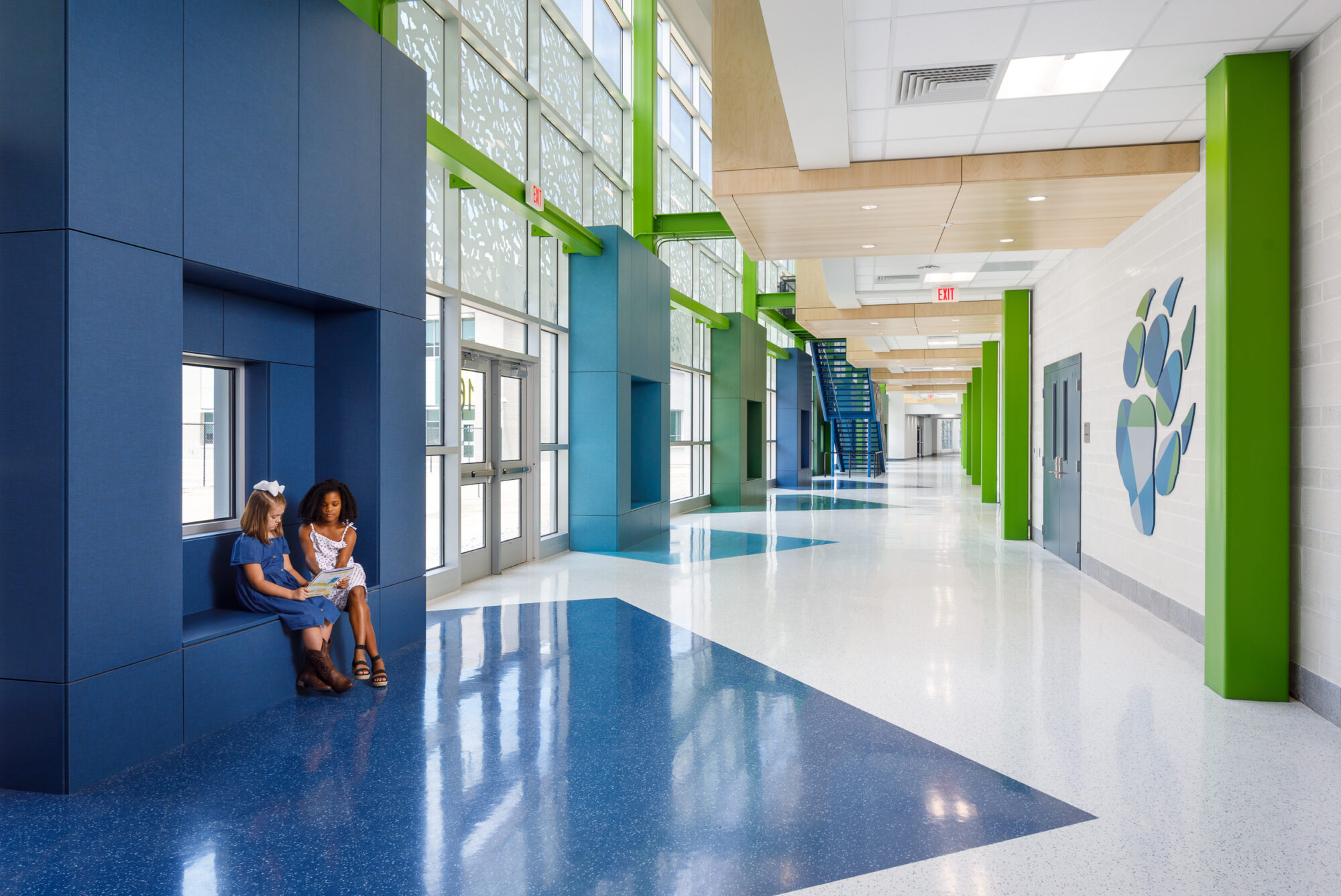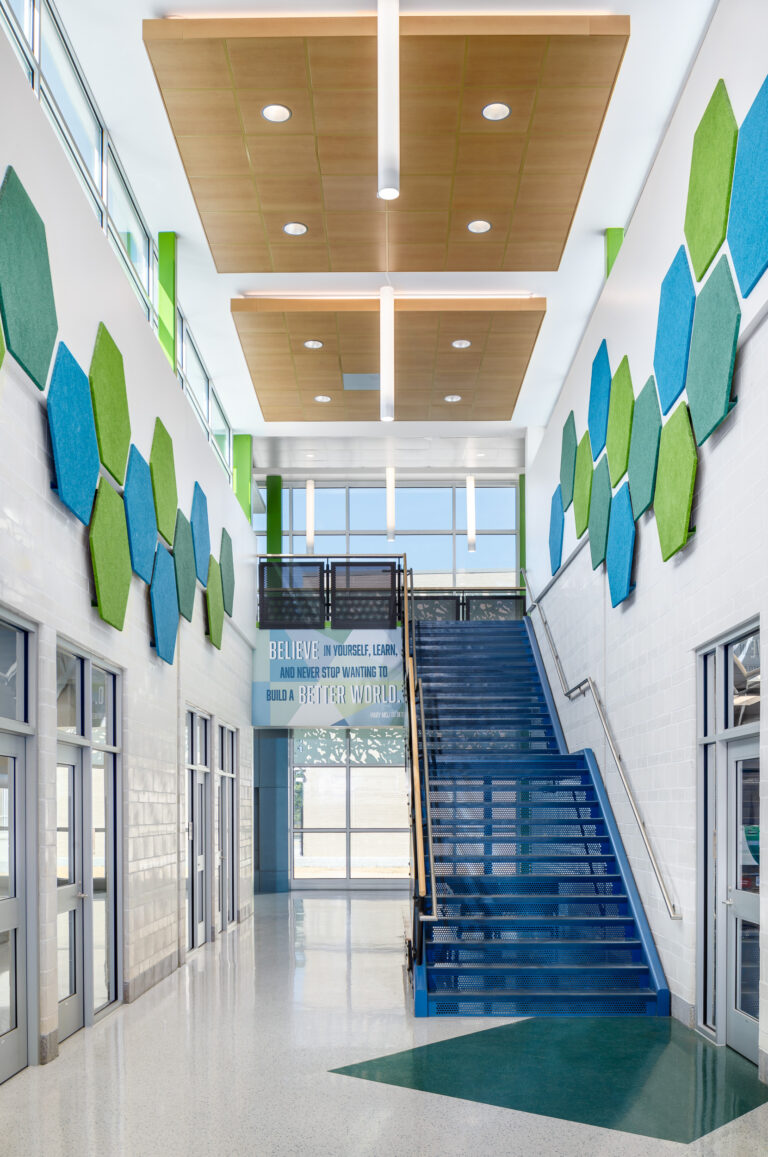The results of The Impact of Biophilic Learning Spaces on Student Success, funded by AIA and published in 2019, associates biophilic design with student stress reduction and improved learning outcomes. With that knowledge, Craig Gaulden Davis Architecture applied these evidence-based design strategies to Bethel-Hanberry Elementary School with the intention of assessing and evaluating the design’s impact using student performance and behavioral metrics along with end-user surveys and interviews.
The Design
Bethel-Hanberry Elementary School is 137,000 sf and designed for 750 students in Blythewood, South Carolina. The school design integrates several of the 15 patterns of biophilic design as defined by Terrapin Bright Green’s Nature Inside: A Biophilic Design Guide. Students enter the building into a warm, colorful, biophilic composition that permeates the design language of the entire facility: daylight infused 2-story volumes, views to nature, wood accents, dappled sunlight from the west, and biomorphic acoustical wall panels.
How We Assessed
The design and research team partnered with Richland School District Two to gather state- and district-wide statistics to compare learning outcomes with the Bethel-Hanberry Elementary School after its inaugural year. The district coordinated student, teacher, and administrator feedback through personal interviews and anonymous surveys. The team gathered mountains of data which is currently being analyzed by the Associate Dean of Johnson College of Business and Economics at USC Upstate.
The 2023 EDspaces conference is the first opportunity to hear the results of the applied research and assessment.
Why It’s Important
Research validates novel design approaches and measures their impact. Biophilic design is one strategy that consistently shows positive effects. Knowing this, designers are better prepared to create spaces that achieve a more positive human experience. Research – Design – Assessment is the process we use to innovate and continually refine space for better student health and performance.

I notice the light and the color scheme connected to nature like the green, the white, and the outside. I like all of the windows and we can just see nature and the trees. I learn better and feel better. The light coming in the windows feels good because it lightens up the room.
-Bethel-Hanberry Student
I see the kids and they’re happy. The openness makes everyone feel more relaxed. I love all of the light, I don’t feel cooped up and I can see outside, which is calming. I love all of the natural light even when I walk down the main street.
-Technology and Learning Coach
I feel relaxed and there’s less stress on my shoulders. I think it’s the bright, happy colors and the windows look so cool that make you feel that way.
-Bethel-Hanberry Student





